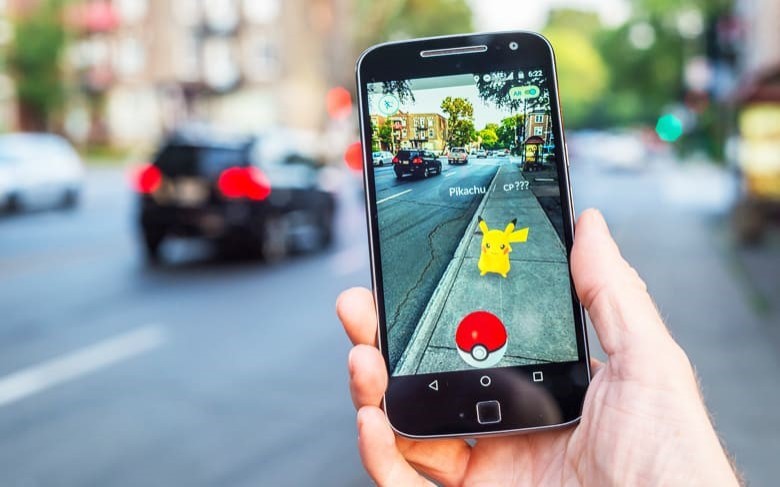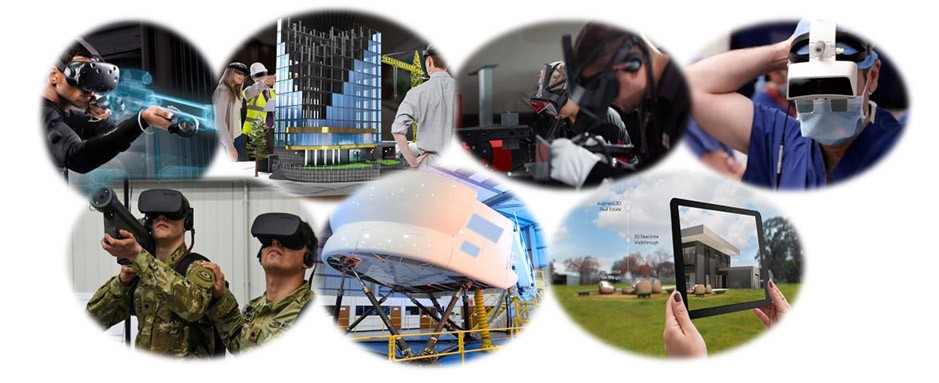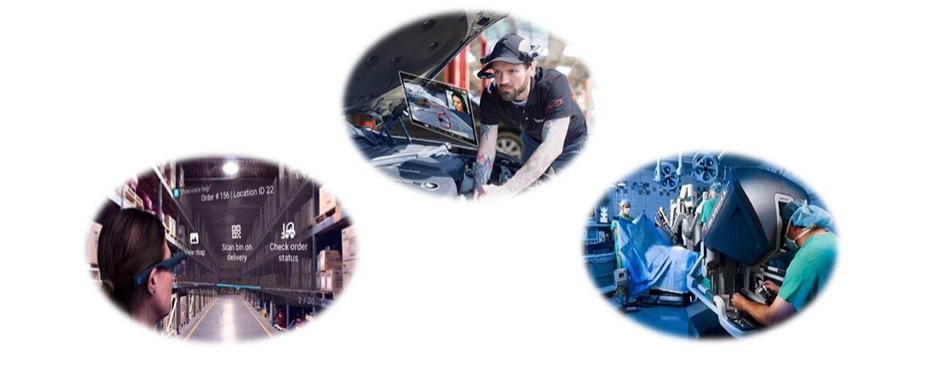Hamid Ebrahimi is a PhD candidate in Mechanical Engineering. Hamid obtained his bachelor’s degree from Ferdowsi University of Mashhad, and completed his master’s degree at K.N. Toosi University of Technology. Hamid co-developed a novel laser-based bioprinter during his PhD, which could potentially be used to print organs for organ transplantation. Hamid has over five years of teaching and R&D experience in dynamic system modeling, optics, computational fluid dynamics, bioinformatics and tissue engineering.
Blog post
Augmented and virtual realities in 4th industrial revolution
 Pikachu Pokémon hunting on the street (https://cxocard.com/what-is-augmented-reality-gaming/)
Pikachu Pokémon hunting on the street (https://cxocard.com/what-is-augmented-reality-gaming/)
Before start reading the text, please click on the link below and follow the instructions:
You may agree with me that it was just an audio file and there was no real barber. Why did it make us feel like a hairdresser? Simple: the producer knew exactly how the human auditory system perceives the directions of sounds. Tricking this sensory system, you were convinced that there were multidirectional sounds in the room.
Such a virtual environment in which the sensory system is stimulated by computers and in which one’s actions partially determine what happens in the environment, is called virtual reality (VR). This system enables the operators physically walk around objects and feel events as they really are.
If the technique is able to overlap and combine alphabetical, symbolic, graphic, and audio information with the real world of the user, this method is called augmented reality (AR). Although in most cases augmented reality has appeared graphically, but in some cases, it has been used in the form of virtual stimulation of other perceptual systems, such as auditory and tactile.
In general, there may be major differences between virtual reality and augmented reality applications. However, there are many similarities in their working principles, and that is the stimulation and deception of human perceptual systems. To better understand these techniques, it is certainly useful to know how perceptual systems understand parameters such as speed, acceleration, dimensions, directions, and so on.
 VR in industry and AR in navigation
VR in industry and AR in navigation
Human perceptual modalities
Perceptible sensations in the human body are perceived through one or with the cooperation of organs. Some of these senses include the followings:
Sight: by processing the data from this perceptual system, our brain is able to estimate the shape, size, dimensions and distance of objects.
Hearing: although this sensory system is simple to operate, it is dramatically influenced by the head pose, physiology, and its relationship to other sensory systems. So that, we are able to even understand the quality of an environment or the dimensions and distance of objects with this system.
Touch: The most important information provided by this sensation is the size of the object, its vibration, texture and shape. Without this sense, we will not even be able to pick an object easily. This sense can even help other senses to perceive objects. For example, if there is no sufficient light in the environment, the sense of touch can help the sense of sight to better understand the texture of objects.
Proprioception: To easily understand this sensation, think about how you can touch your nose with your hands when your eyes are closed. This feeling allows us to understand the movement and position of our limbs consciously or unconsciously. This feeling may not seem very practical to us, but VR designers need to consider it in their design to make their design look more realistic.
Balance and physical motion: The labyrinths in the inner ear acts as a detector of the mechanical motion detector (three-axis accelerometer) and is able to provide data to maintain balance and perceive physical motion. Normally, we have no understanding of how this system works, but if this system does not work properly, we will not be able to maintain our balance. Therefore, VR designers must properly stimulate this perceptual sense in cases where it is necessary to create the impression of accelerating the human body.
Note that for a virtual environment to look real, it is sometimes necessary for the sensations to be stimulated together. For better understanding, remember when the sound and image in a movie are not synchronized or in a speech, the speaker's voice is not synchronized with the movements of the lips. In these cases, your perceptual system will hardly understand the details.
This information can also make VR modelling easier. For instance, creating a sense of very high acceleration during takeoff in a flight simulator may at first glance require very powerful engines and very large space. While rotating the pilot seat with the monitors in the simulator, VR developers stimulate the inner ear and the visual system and artificially create a sense of acceleration in pilots.
Applications of VR and AR in 4th industrial revolution
It seems that virtual reality is used only in the field of entertainment and the gaming industries. However, VR has been successfully deployed in various industries for many years because of its characteristics. The most important of which are the followings:
- Reducing the cost of design mistakes before making any product
- Reducing time to market by speeding up the trial and error
- Providing a safe training environment where training with a real system is very risky
Reducing post-traumatic stress disorder (PTSD) by gradually increasing exposure to feared stimuli
 VR in gaming, military mission training, construction, flight simulator and welding; AR in healthcare and real estate
VR in gaming, military mission training, construction, flight simulator and welding; AR in healthcare and real estate
In addition to the role that virtual reality has played in creating excitement in the gaming industry, these techniques have also facilitated and improved the followings:
Architecture and construction:
In the process of designing and building architectures, there is usually a strong need for communication between engineers, architects and the employer to be able to create qualified products to meet customer needs.
For this purpose, the need for a 3D virtual environment that allows the employer to imagine the building or product designed before construction will be very useful. VR has the potential to create such an environment so that employers are aware of the design at every moment.
These methods even have aided real estates and provide a virtual tour for customers in cases when it is not possible to visit in person (such as COVID19 pandemic).
Engineering:
The use of VR and AR in engineering improves the manufacturing and maintenance process, reduces errors and the cost of design and manufacturing. These features are only due to the ability to visualize and review the design in real size and shape and make the collaboration in the design and decision-making easier.
Practical examples for the mentioned application include the design of destroyer, submarines, offshore patrol vessel, vehicle ergonomics, spacecraft, flight simulators in pilot training, and the training of professional soldiers/commandos for missions.
Health:
One of the aspects in which this technology has been widely used is physical and mental health. VR/AR have been mainly applied for staff training and to facilitate the treatment process. For instance, psychologists can use VR to treat all types of phobias (acrophobia, aerophobia and so on), or surgeons can have access to the patient records during the surgery with AR.
Education:
One of the best and most important applications of VR/AR is definitely the training of specific and tangible skills. These technologies train the individuals to follow the procedures with precise movement by providing simplified explanations during the process and observing how they carry out and giving feedback to the student. These include training in welding and painting skills with VR, or training in car repair with AR using smart glasses.
To realize the 4th industrial revolution, VR/AR have played a decisive role in various fields. It is believed that with the development of AR methods in the near future we will see a change in the field of remote assistance, navigation, advertising, shopping, warehousing and so on.
 AR in warehousing, remote assistance; VR in remote surgery
AR in warehousing, remote assistance; VR in remote surgery
In addition, virtual reality systems will reach a level of technology that is not only effective in training level but will also have the ability to play the role of an interface for remotely controlling mechanical systems by operators. For example, remote surgery by surgeon robots, where the patient and the surgeon robot can be in one corner of the world and the surgeon with a virtual reality system can be in another corner of the world.
According to the above-mentioned, VR/AR have currently caused many improvements in health, education, and industries. This is a clear horizon for improving and optimizing the technologies we need in the 4th industrial revolution era.
About the author


